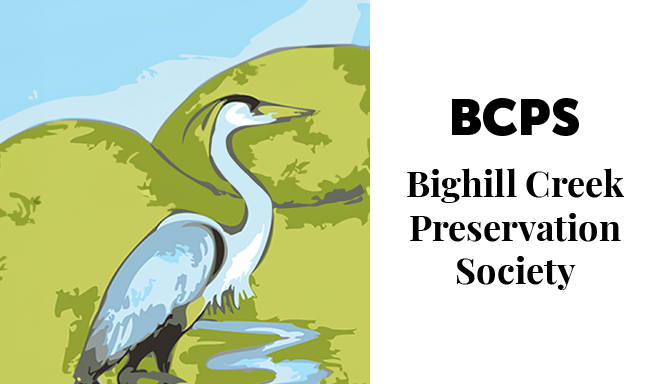While the Cochrane Lakes and the Big Hill Springs are not ‘topographically linked’ they are thought to be ‘hydrologically linked’. A member of the Bighill Creek Preservation Society said two U of C studies have confirmed their theory that water from the lakes drains through the overburden and gravel filter onto bedrock before running in various directions, including toward the spring.
The area residents working on the Bighill Creek Preservation Society (BCPS) have already had a busy 2022, even before summertime initiatives begin.
The volunteer organization’s stated mission is to protect the health of the Bighill Creek watershed, an area covering several miles north and east of Cochrane that feeds water into the creek winding through Cochrane Ranche and the Glenbow before meeting the Bow River.
Much of the group’s work over the last couple of years has involved raising public awareness and liaising with government on current or proposed gravel operations in the area. In a presentation to town council last month, they outlined certain projects they say could potentially leach an unacceptable amount of contaminants into groundwater feeding the springs, creek and local ecosystem.
They’re particularly focused on the ‘Summit’ operation, planned by Mountain Ash LP on a site roughly a kilometre away from Big Hill Springs Provincial Park. The project received the necessary approvals from Rocky View County last year, and is now undergoing environmental review by the province.
“It sits too close to the main spring of the park too close to the park itself,” said society president Gerry Bietz.
“We are hopeful that Alberta Environment and Parks will look at the science, that is their responsibility, and make a considered decision and we’re hopeful that the application will be denied.”
In the coming weeks, BCPS is hoping Alberta Environment and Parks will approve the society as an ‘affected party’, meaning the development applicant would have to respond to concerns outlined in the society’s formal ‘statement of concern.’
“If this application is approved, those properties even closer to the main spring might be enhanced as far as potential approval is concerned,” he added.
“It could set a precedent that would be even more hazardous for the park and the groundwater.”
“There are lots of other (gravel or aggregate) reserves that are available that are not in environmentally-sensitive areas.”
As they wait to hear from the province, the group has partnered with a University of Calgary research student who will collect samples from springs in the area over the summer.
“Big Hill Springs Provincial Park contributes fifty per cent of the flow into Bighill Creek, but there are numerous other springs that erupt along the edges of the coulee that supply water into the creek and each of those needs to be identified as a location and then they need to be tested for volume and for quality,” Bietz explained.
“All the information has to go into a database, and these studies create a baseline of information. Three or four years down the pike, we can go back and look at it again and say ‘Is it better or is it worse?’”
Back in town, the BCPS has lots of ‘hands-on’ work planned for the summer as well.
They’ll continue their regular program of water and sediment sampling, tending to the trails running through the watershed on Mount St. Francis land, and conduct analyses of the insect and fish populations as well.
The society president said the board and membership included several individuals with career expertise in environmental science. They also work with student and contracted researchers, and other environmental stewardship organizations.
“Some have science degrees, and some are volunteers who come out and help us with, for example, trail maintenance,” he said of the membership.
“I am much indebted to those people for their scientific backgrounds and knowledge in regard to all these aspects of the ecology.”
Membership to the BCPS is free. For more information, to donate or to subscribe to their mailing list with updates on their activities, email info@bighillcreek.ca.
“If it the (watershed) isn’t recognized as valuable and protected with some overarching protection, then little by little development will take place whether it’s industrial, gravel pits, residential or oil and gas, little by little they encroach on it and they disturb the ecology,” said Bietz.
“Wildlife has a harder and harder time dodging the human-made obstacles, and it becomes death by a thousand cuts if there isn’t a plan and that plan isn’t activated and quite candidly, we’re getting older. We’ve only got so much time left to see what we can do to get a plan in place.”
Volunteers at Bighill Creek Preservation Society look out for Cochrane’s unique ecosystem, Patrick Gibson, May 03, 2022
Donate Today
Yes I want to help protect Bighill Creek!
Join Us!
Please send us your full name and email address to info@bighillcreek.ca and we will add you to our email list.
Feature
Bighill Creek Video
Produced by James Napoli
This 8 minute video is sure to inspire you!
Learn more about Bighill Creek and the people working to protect it.
